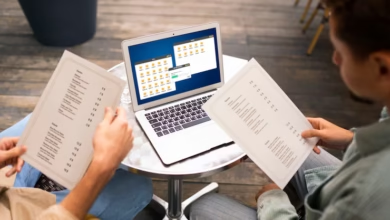213 Area Code: What It Means and Why It’s Important

The 213 Area Code is one of the oldest and most famous phone area codes in the United States. If you see a phone number that starts with 213, it usually means the call is coming from Los Angeles, California. Many people recognize this code because it is linked to a big, busy city full of history and life.
Knowing about the 213 area code helps you understand where a phone call might be coming from and even gives you a little peek into the culture of Los Angeles. Whether you’re calling a friend, a business, or just curious, learning about this area code can make you feel more connected to the city and its people.
What Is the 213 Area Code?
The 213 area code is one of the very first phone codes ever created in the United States. It belongs to Los Angeles, a big city in California. When you see a phone number that starts with this code, it means the phone is likely connected to somewhere in downtown Los Angeles or nearby areas.
This area code is important because it helps the phone system know where to send calls. It works like a label for phone numbers, telling us the rough location of the person or business. Even though phones today are mostly cell phones and can be used anywhere, the 213 area code still keeps its connection with Los Angeles.
If you live in or visit Los Angeles, you might hear the 213 area code often. It is well-known and sometimes even part of the city’s culture. Knowing what this code means can help you understand where a call is coming from or if a business is located in this famous city.
History of the 213 Area Code
The 213 area code has a rich history that goes back to 1947. It was one of the first area codes created when the North American Numbering Plan started. At that time, 213 covered a much bigger part of California, including many areas around Los Angeles.
Over time, as more people got phones, the area covered by the 213 area code got smaller. New area codes were created to handle the growing number of phone users. But even today, 213 still covers the heart of Los Angeles, especially the downtown area.
The history of this code shows how technology and cities change. From just a few phone lines in the past, to millions now, the 213 area code has stayed a symbol of one of the biggest cities in the country. It reminds us how phone systems grow with people and businesses.
Why Is the 213 Area Code Famous?
The 213 area code is famous for many reasons. First, it belongs to Los Angeles, which is known around the world for movies, music, and big businesses. Because of this, the area code is often seen in movies, songs, and TV shows that talk about the city.
Many famous people and companies use phone numbers with this code. This makes 213 special and easily recognizable. People sometimes even use the code as a way to show pride in being from Los Angeles.
Besides fame, the 213 area code is a part of the city’s identity. It connects people to a place known for creativity and culture. When you hear or see 213, you think about the energy and life of Los Angeles.
Which Places Use the 213 Area Code?
The 213 area code mostly covers downtown Los Angeles and a few nearby neighborhoods. This area is very busy, with lots of offices, shops, and homes. Many people work or live in places that use the 213 area code.
Some popular areas with this code include:
- Downtown Los Angeles
- The Arts District
- Little Tokyo
- Parts of Hollywood
Because the city keeps growing, other area codes have been added around Los Angeles. But 213 stays as the main code for the city center. If you get a call from this code, it often means someone is calling from the heart of Los Angeles.
How Did the 213 Area Code Change Over Time?
Over many years, the 213 area code has seen many changes. At first, it covered a huge part of Southern California. But as more people got phones, the area was split into smaller parts with new codes like 310, 424, and 818.
These changes helped make sure there were enough phone numbers for everyone. Even after all the splits, 213 stayed important because it covers the busy downtown area. The city grew, and so did the need for new codes to keep up.
Today, 213 works alongside other area codes to serve all the phone users in Los Angeles. It shows how phone systems adapt when cities become bigger and busier.
The 213 Area Code and Los Angeles Culture
The 213 area code is more than just numbers. It is part of the culture and feeling of Los Angeles. Many people see it as a symbol of the city’s heart. It appears in songs, street art, and even fashion, showing pride for the city.
Why People Love the 213 Area Code
- It represents downtown Los Angeles
- It connects to music and entertainment
- It shows local pride and identity
How the 213 Code Shows City Spirit
- Used by local businesses in branding
- Featured in movies and TV shows set in LA
- Celebrated in events and festivals
This area code tells a story about the city and its people. It helps everyone feel connected to a place full of energy and creativity.
What to Do When You Get a Call From the 213 Area Code
Getting a call from the 213 area code usually means someone is trying to reach you from downtown Los Angeles or nearby. It could be a friend, a business, or even a new opportunity. But sometimes, people wonder if these calls are safe or important.
If you don’t recognize the number, it’s okay to be careful. You can let the call go to voicemail and listen later. Many businesses in LA use the 213 area code, so it could be something useful. But if the call seems suspicious, don’t share personal information.
It’s good to check who is calling by searching the number online. Many websites help you find out if the number is known for scams or if it belongs to a real company. This way, you can protect yourself but still not miss important calls from the 213 area code.
How the 213 Area Code Works With Other Los Angeles Codes
Los Angeles is a big city, so it has many area codes besides 213. The 213 area code mostly covers the downtown part, but other codes cover the rest of the city and nearby areas. These different codes help phone systems organize calls better and give enough phone numbers to everyone.
Some other area codes near 213 include:
- 310 – Covers parts of West Los Angeles and the beach cities
- 424 – An overlay for the 310 area, used for new numbers
- 818 – Covers the San Fernando Valley area
- 626 – Covers Pasadena and nearby cities
Why Does LA Need So Many Area Codes?
- The city is very big with millions of people
- Many businesses and homes need phone numbers
- Cell phones and internet phones use lots of numbers
By using many area codes, Los Angeles makes sure people can get new phone numbers whenever they need. The 213 area code stays special because it covers the oldest and busiest part of the city.
Conclusion
The 213 area code is very special because it shows where a phone call comes from in Los Angeles. It has a long history and is part of the city’s story. Even today, it helps people know they are connected to the busy downtown part of LA.
Knowing about the 213 area code can make phone calls easier to understand. Whether you live in LA or just hear the code, it helps you feel close to the city and all the fun things happening there. It’s more than just numbers—it’s a piece of Los Angeles.
FAQs
Q: What city does the 213 area code belong to?
A: The 213 area code belongs to Los Angeles, especially the downtown area.
Q: When was the 213 area code created?
A: It was created in 1947 as one of the first area codes in the US.
Q: Does the 213 area code cover all of Los Angeles?
A: No, it mostly covers downtown LA and some nearby neighborhoods.
Q: Can I get a new phone number with the 213 area code?
A: Yes, but because it is popular, many new numbers might use other nearby codes too.
Q: Is it safe to answer calls from the 213 area code?
A: Usually yes, but if you don’t know the caller, it’s good to be careful and check who they are first.



